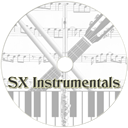Filter on ALL, SYNTH, DRUM, SAMPLER or MISC |
Total list currently 2405 items in 330 Brands |
MidiBox | SammichSID |
|
|
Description | The Commodore 64 is one of the best-known and best-loved computers of the 80s. It was the best selling PC of its era, and many fondly remember playing games on the unit. Adding to the computer's fame was the SID chip: an extremely powerful sound chip for its time, well beyond anything its competitors were producing. The SID chip is responsible for some of the most recognizable chip music ever produced. Other synthesizers have harnessed the power of the SID chip (see the Elektron SIDstation), but none so completely as the MidiBox SID project. MidiBox is an open-source, modular approach to MIDI and synthesis, and the SID project is an engine designed to provide powerful access to the sound enervation capabilities of the SID. The sammichSID is a specific offshoot of the MidiBox SID, designed from the ground up to be distributed as a complete kit, simple enough for a beginner to build. It runs on two SID chips (as opposed to the single sound chip of the Commodore 64 computer), allowing for stereo operation. Instead of the half dozen or so PCBs one would need for a modular MidiBox SID, the sammichSID is two PCBs that fit together inside a custom case. Onto the synthesis: each chip has three independent voices and one analog filter. The Midibox software allows for very powerful access to all six voices: it can be set up as a monster monosynth, a six voice polyphonic synth, or any number of synced or ring-modulated combinations of oscillators. There is an extremely powerful modulation matrix, arpeggiator, TB-303-like bassline sequencer and drum sequencer. The kits are no longer available, but completed specimens are often up for sale on the secondhand market. At about a third (or less) of the price of a SIDstation and many times more powerful, this is one of the definitive SID synths. |
| Brand | MidiBox |
| Model | SammichSID |
| Device | Synth |
| Type | Desktop |
| Engine Type | Digital |
| Engine | VA |
| Voices (max) | 6 |
| Multitimbral | 2 |
| Oscillators | 6 |
| LFO | Six LFOs, modulation matrix |
| Engine Detailed | Two SID chips, three oscillators each. Sawtooth, triangle, pulse, quasi-random noise. Waveforms mixable. |
| Filter (VCF) | 1 12dB/oct filter per chip |
| Envelope (VCA) | 2 DADDSRR envelopes sources with optional non-linear curve for Attack/Decay/Release |
| Memory | 4 banks of 128 patches, plus 128 "ensembles" |
| Sequencer | Wavetable sequencer, bassline sequencer, drum sequencer. |
| Arpeggiator | Six independent arpeggiators. |
| Keys | 0 |
| Key type | N/A |
| Velocity | N/A |
| Aftertouch | N/A |
| Midi | I-O |
| Produced: |
| Legend: | Obvious | Y: Yes, N: No, N/A: Not Applicable | |
| VCO | Voltage Controlled Oscillator | DCO | Digital Controlled Oscillator |
| LFO | Low Frequency Oscillator | Sub | Sub Oscillator |
| VCF | Voltage Controlled Filter | VCA | Voltage Controlled Amplifier |
| Velocity | As with a piano, the harder you hit a key, the louder the sound, unlike most organs which always produce the same loudness no matter how hard you hit a key. | Aftertouch | Pressing a key after you activated it. Channel Aftertouch, no matter which key, it will send a Channel message. Poly Aftertouch, sends the pressure per key instead of the whole channel. |
| Values for OSC, LFO, Filter, Envelope are per voice unless stated otherwise. | |||


